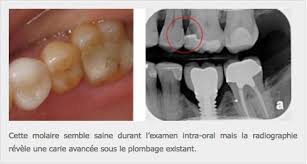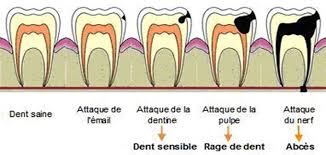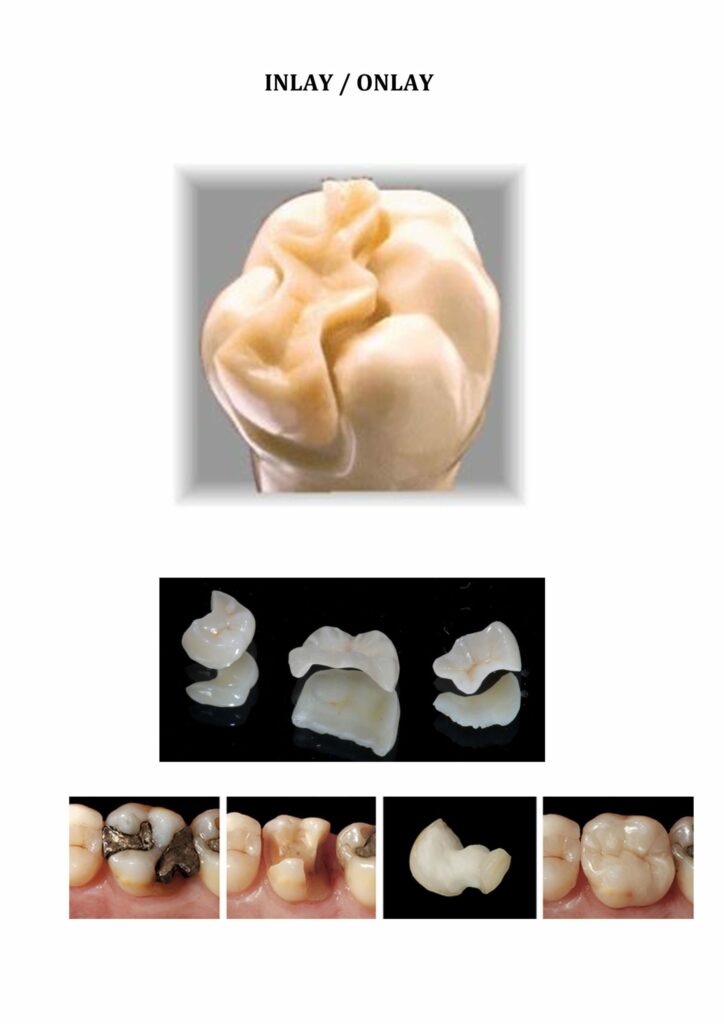General Dentistry
The cavity
Cavities are the destruction of dental tissue due to the multiplication of cariogenic bacteria within the tooth.
The entry point for bacteria is most often the interdental area, which is an area where bacteria can hide and multiply without being cleaned by the tongue, saliva, or toothbrush. Indeed, the teeth being very tight do not let pass the cleaning agents of the mouth, whether it is natural like saliva and the tongue, or manual with the toothbrush.

Only the use of dental floss will make it possible to clean these zones, and thus to reduce in a very significant way the risk of cavities, or recurrences of cavities under present dental restorations.

If the caries is not diagnosed at an early stage, it will spread into the enamel, then into the dentin (under the dental enamel) until it reaches the nerve of the tooth (=dental pulp).



Cavities are not painful in the early stages and can be seen mainly on dental X-rays, especially when they are present between the teeth. At this stage, cavity treatment is very simple.
The tooth will become sensitive when the cavity is deep in the dentin of the tooth. At this stage, caries treatment can usually be done while maintaining the vitality of the tooth. In some cases, a cavity base representing a bio-compatible material with soothing properties for the dental pulp will be applied following the cleaning of the cavity on the part closest to the dental pulp, at the bottom of the cavity. This procedure is calledpulp capping. Above this cavity base, the tooth will be restored with a composite or a ceramic inlay/onlay.
When the decay progresses to the nerve of the tooth (or dental pulp), the tooth will become painful, especially when the tooth is confronted with something cold. It is the inflammation of the pulp of the tooth which is responsible for this pain; it is called pulpitis, or more vulgarly a toothache. This pain may be accentuated in the supine position due to increased pressure in the tooth in this position. A pulsating sensation is most often felt in the tooth.
In some cases, the inflammation of the tooth will be reversible (reversible pulpitis), and the dentist will be able to try, during the cleaning of caries, a pulp capping protocol to try to keep the tooth alive.
In other cases, the inflammation of the tooth will be irreversible (irreversible pulpitis), and a devitalization of the tooth will be necessary in order to remove the inflammatory dental pulp present in the tooth and its root.





